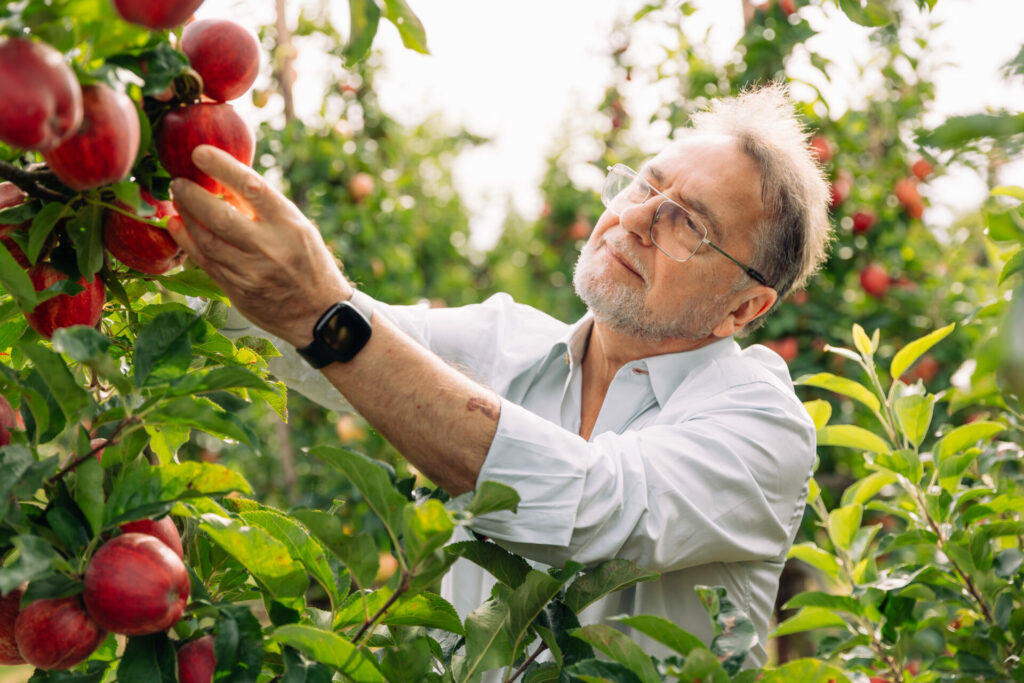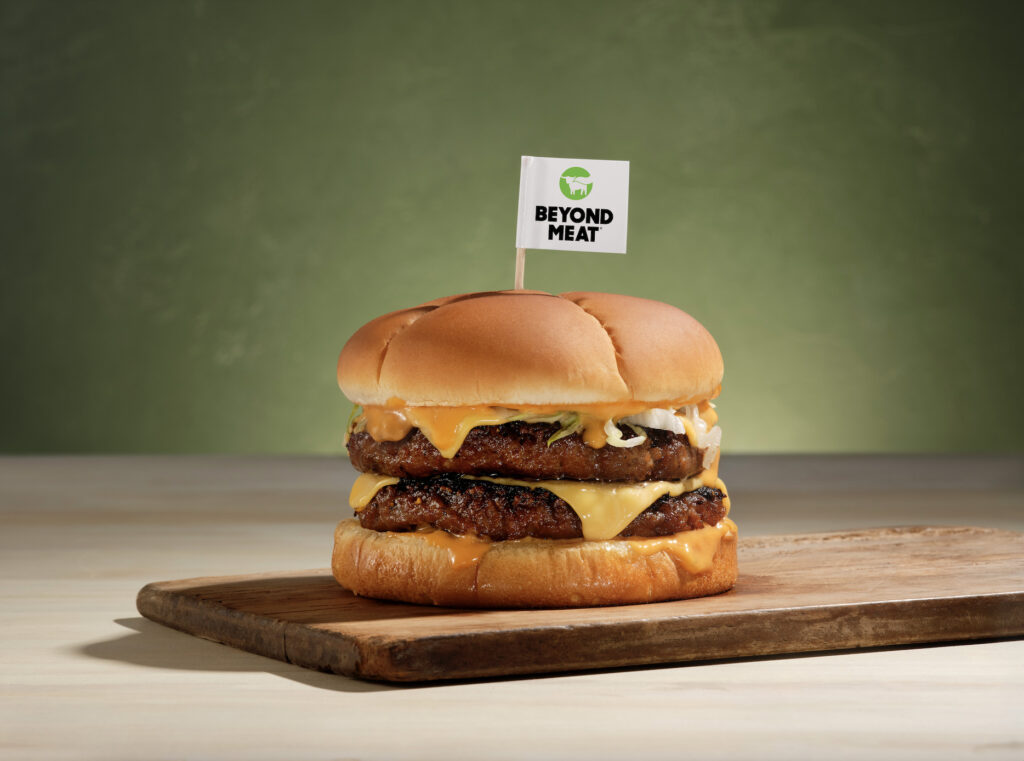Once upon a time our planet was filled with lush forests, expansive grasslands, and wild shrubs with a mere four per cent dedicated to farming. Today, however, an aerial view reveals a shocking transformation: these natural landscapes have given way to sprawling monoculture farms. Over 50 per cent of the world’s habitable land – excluding glaciers, ocean or deserts terrains – is now used for farming to feed our ever-growing population.
When you think about the climate crisis, meat may not be the first thing that springs to mind, but the truth is it should be. The livestock industry’s impact on our planet is equivalent to the exhaust fumes from every car, truck, train and plane combined. Both transport and livestock agriculture contribute between 14 -16 per cent of all global greenhouse gases each year and by 2030, the livestock sector will account for almost half of the world’s emissions budget for 1.5C (the limited temperature rise signed by global leaders in 2015’s The Paris Agreement).

Global meat consumption has increased significantly in recent decades, with per capita consumption almost doubling since the early 1960s, according to the Food and Agriculture Organization of the United Nations (FAO). While the average person consumed 23.1 kgs of meat every year in the ’60s, that figure had risen to 43.2 kgs by 2019. Today, more than 92 billion land animals are raised and slaughtered for food production every year.
Why is Meat Such a Massive Emitter?
The production of meat is a major contributor to greenhouse gas emissions via carbon dioxide, methane, and nitrous oxide – all of which accumulate in the Earth’s atmosphere, absorbing radiation and preventing heat escaping, which in turn contributes to global warming.
Farming accounts today for some 40 per cent of global deforestation… Out of the staggering 15 billion trees felled annually, 6 billion are sacrificed to accommodate farm animals and cultivate their feed
Farmed animals such as cows and sheep contribute to global greenhouse gas emissions primarily through the release of methane during digestion and through manure management. Both are a source of methane and nitrous oxide that are significantly more potent than CO2 in contributing to global warming. Methane is 27 to 30 times more capable of trapping heat than CO2 over a 100-year period while nitrous oxide is a whopping 273 times more destructive. Since 1961 the consumption of meat has more than doubled and consequent emissions of methane have increased by 1.7 times.

But it’s not just emissions from cattle. The amount of natural land brought into agricultural use in the last 60 years is unprecedented in human history. A prominent driver of deforestation, livestock farming accounts today for some 40 per cent of global deforestation. To illustrate the scale, out of the staggering 15 billion trees felled annually, 6 billion are sacrificed to accommodate farm animals and cultivate their feed.
A significant portion of the land cleared for animal agriculture was previously inhabited by diverse plant and animal species.Today 60 per cent of our biodiversity decline is linked to meat consumption
Cattle ranching — and the soy farming needed to feed the cattle which amounts to 90 per cent of soy grown – is the biggest cause of deforestation in virtually every Amazon country and results in 340 million tons of carbon being released into the atmosphere each year. This not only destroys critical ecosystems but also eliminates forests that are vital carbon sinks for absorbing carbon from the air.
The world’s remaining forests are crucial for protecting biodiversity, endangered species and the indigenous communities that live within them. A significant portion of the land cleared for animal agriculture was previously inhabited by diverse plant and animal species. Today 60 per cent of our biodiversity decline is linked to meat consumption.
The production of just 1lb of beef demands a staggering 1,800 gallons of water – that’s the same as filling 39 bathtubs to the brim
The environmental toll is not only limited to land use; the production of beef specifically is highly resource intensive. Excessive water usage may not be commonly linked to meat production but the animal agriculture industry uses massive amounts of water to raise and slaughter animals. The production of just 1lb of beef demands a staggering 1,847 gallons of water – that’s the same as filling 39 bathtubs to the brim, making it easy to see why producing food for livestock requires almost 20 per cent of the world’s fresh water.

Plant-based foods, on the other hand, have a significantly lower water footprint compared to meat. Producing 1 gram of protein from beef requires six times more water than obtaining the equivalent protein from pulses.
The Power of Your Plate
Cutting meat consumption is a powerful and personal thing most people can do to tackle the climate crisis, and they can do it immediately. Since the climate impact of plant-based foods is typically 10 to 50 times smaller than that of animal products, switching to a plant-based diet could help reduce emissions. In a 2019 report by the UN Intergovernmental Panel on Climate Change Land Use, a need to urgently revamp our global food system is laid out as a key solution to the escalating biodiversity, climate, and food security crises.
Consumers do not have to become fully vegan to make an impact. According to one recent study, if every person in the US cut their meat consumption by 25 per cent, it would reduce annual greenhouse gas emissions by one per cent. That may not sound like much, but it would help protect crucial rainforests, so the positive effects such as reduced water use, improved biodiversity and safeguarded rights of indigenous people would be amplified.
In recent years, accessing plant-based meat alternatives has become remarkably easier, reflecting a growing shift towards sustainable and cruelty-free food choices. Supermarkets and grocery stores now feature dedicated sections for plant-based products, offering a diverse range of meat substitutes, from burgers and sausages to plant-based seafood. In fact, the market is growing so quickly that it is projected to go from USD 7.9 billion in 2022 to USD 15.7 billion in 2027.

Additionally, advancements in food technology have paved the way for cell-based meat, cultivated directly from animal cells without the need for traditional farming. While still emerging, cell-based meats are gradually entering the market, offering a promising avenue for environmentally conscious consumers seeking alternatives that align with ethical and sustainability considerations.
As discussions around sustainable living increase globally, it’s becomes increasingly crucial to consider not only what we consume but also where our food originates and the environmental footprint associated with its production. The food we choose is a crucial part of the sustainability puzzle and the power of our plate is something we all must work on for a more harmonious relationship with our planet.













